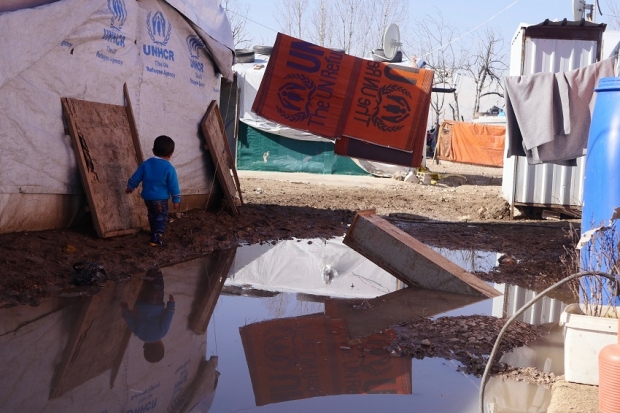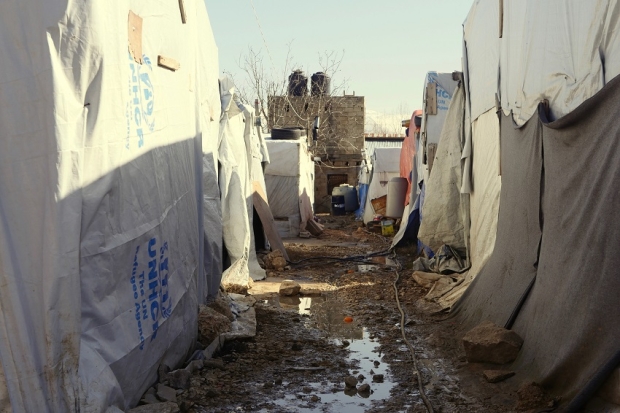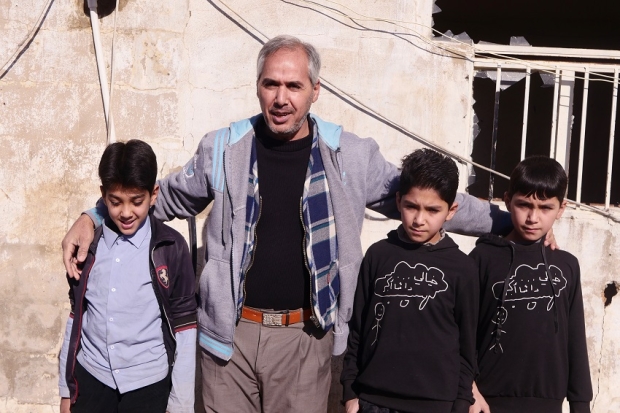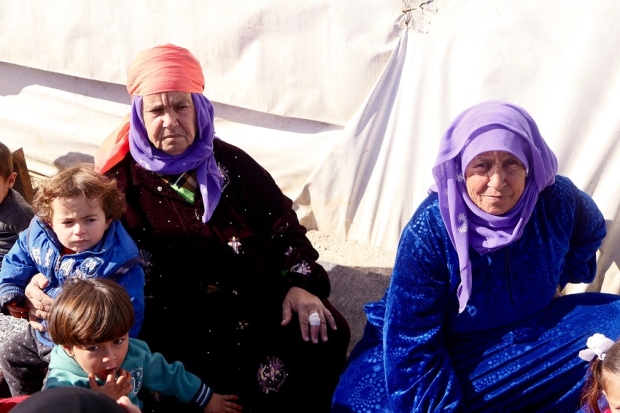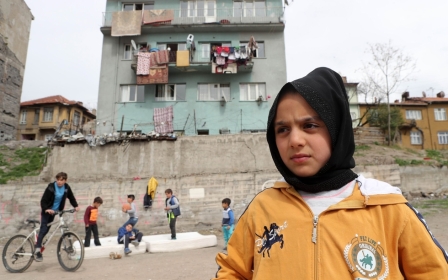'I just want to survive': Syrian refugees in Lebanon weather storm after storm
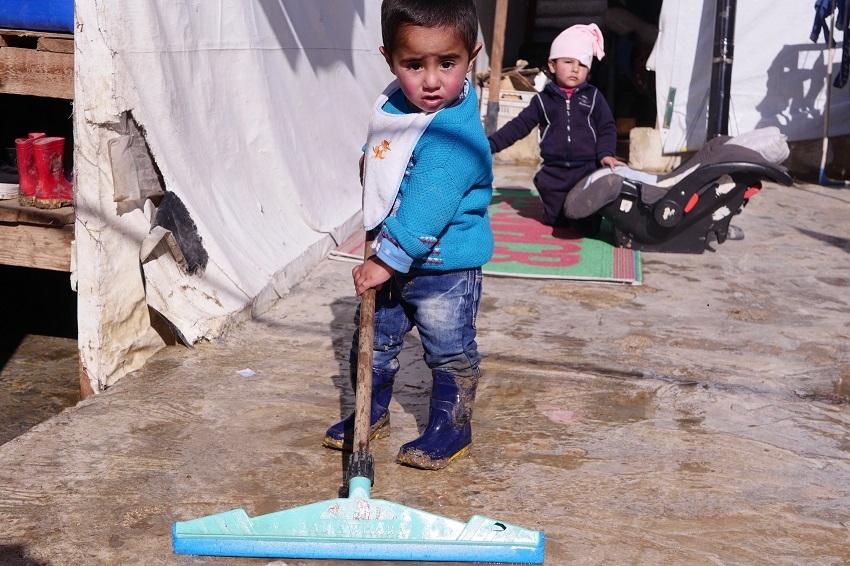
BAR ELIAS, Lebanon - When storm Norma wreaked havoc on Lebanon last week, Mahmoud, a Syrian refugee who has lived in a tented settlement with his wife and children for the past five-and-a-half years, tried to stabilise his home as best he could.
But with no concrete to cover the earth around him, the rain quickly flooded his living space and the adjacent toilet. Sewage mixed with mud made for a toxic combination, leaving all the members of Mahmoud’s family, as well as their neighbours, sick.
“There was water everywhere and very little we could do about it,” the 36-year-old told Middle East Eye on Saturday afternoon, two days before a second storm was expected to hit.
“The blankets and mattresses we use to sleep on still aren’t dry yet and we’re going to have to face more rain, wind and the cold.”
According to the United Nations Refugee Agency (UNHCR), the storm had severe consequences on about 11,000 Syrian refugees.
Those living in shoddy conditions at higher altitudes faced an onslaught of blistering winds and snow, causing tents to collapse altogether. In north Lebanon’s Minniyeh, an eight-year-old Syrian girl was killed. Across the Bekaa, where the majority of Syrian refugees in Lebanon live, heavy rain caused massive flooding.
But as the Syrian crisis continues, refugees in Lebanon have borne the brunt of extreme winter weather for nearly a decade with no improvement in their living conditions.
Amid fears in Lebanon that the Syrian refugees will remain in the country permanently, displaced Syrians living in tented settlements are not allowed to build with robust materials here.
“There are a number of reasons why refugees and humanitarian organisations helping them cannot build stronger living structures,” Mireille Girard, UNHCR's representative in Lebanon, told Middle East Eye.
"We have been advocating to be able to use more robust elements for shelters rather than just plastic sheets and wood. We are clarifying to all concerned parties that improved structures do not mean permanent ones; they are still temporary. They just help better prevent and protect people during harsh weather conditions."
Nonetheless, for Mahmoud and many like him, remaining in Lebanon and surviving a harsh winter without adequate supplies is not a choice.
“There is nothing for my family and me to go back to. We're from a town near Idlib. Our house has been razed to the ground. We would rather endure the cold and the storms [in Lebanon] than go and face death [in Syria],” he said.
Half a kilometre away, 34-year-old Yasser Hurrat helped others re-build drainage systems for the upcoming storm. The ground, still muddy from the rainfall and people’s movements, showed no signs of drying up.
As the leader of an informal tented settlement of about 200 people, known as a shawish, Hurrat is responsible for organising the small community and communicating with the landlord from whom the refugees rent their piece of land.
“Some of the children were moved to a school in Bar Elias for a night, but almost everyone stayed to protect their own belongings and drain their houses of water," Hurrat said.
Wasel Khodor was among the refugees who stayed behind.
The 46-year-old rounded up his three sons, the eldest no more than 11, and expressed his pride that they all worked through dawn to keep their tent together.
According to UNHCR, the most vulnerable refugees were offered temporary places to stay outside the camps, but not everyone agreed to relocate.
“All of our things are here,” Khodor told Middle East Eye, about why the family stayed put despite the weather.
Storm Miriam, which peaked on Tuesday night, has kept humanitarian organisations busy, their staff distributing dry blankets, clothing, and relocating those willing to move. On Tuesday evening, Lebanon’s Education Minister Marwan Hamade announced the closure of schools the following day.
Like Mahmoud, Hurrat is from the Idlib area, while Khodor grew up near Aleppo.
Neither can fathom returning to Syria for now, and as desolate as conditions are in Lebanon, they say that at least they’ve been able to create their own "community".
According to the UN refugee agency, about 88 percent of Syrian refugees in Lebanon are eager to return home, leaving Hurrat, Mahmoud and Khodor in a minority.
While UNHCR has not pushed them to go back due to ongoing instability in Syria, the Lebanese government has strongly advocated and facilitated their return.
In the fall, Major General Abbas Ibrahim, head of Lebanon's General Security, told Reuters news agency that about 50,000 Syrian refugees had returned to their home country.
The fate of many of these refugees, however, is unclear as humanitarian organisations are unable to operate with ease under the government of Bashar al-Assad and the continued war.
"This is the reality we are facing, and I just want to survive, do what’s best for my family," Khodor said.
This article is available in French on Middle East Eye French edition.
New MEE newsletter: Jerusalem Dispatch
Sign up to get the latest insights and analysis on Israel-Palestine, alongside Turkey Unpacked and other MEE newsletters
Middle East Eye delivers independent and unrivalled coverage and analysis of the Middle East, North Africa and beyond. To learn more about republishing this content and the associated fees, please fill out this form. More about MEE can be found here.


